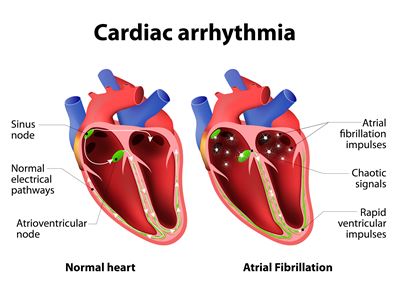Indiana University School of Medicine researchers have a strong legacy as pioneers of cardiac electrophysiology. Their seminal contributions inform the current understanding of the mechanics of fibrillation and defibrillation, the development and implantation of the transvenous cardioverter to prevent cardiac arrest and the evolution of the electrocardiogram. Today, investigators of the Krannert Cardiovascular Research Center are continuing to advance the electrophysiology through research at the molecular and cellular level, incorporating novel biomedical engineering approaches to contribute new findings regarding arrhythmogenesis in adults.

A normal heart normally pumps 60 to 100 times per minute to circulate blood throughout the human body and is managed by a network of cells that operate the body’s cardiac conduction system, otherwise known as the heart’s electrical system. However, more than 1.5 to 5 percent of the general population experience arrhythmia, an abnormal rhythm of the heart. When heart rhythm is impaired, electrical impulses may run too fast (tachycardia), too slow (bradycardia) or irregularly (fibrillation).
Arrhythmias can also begin in the ventricles or just above the ventricles. Left untreated, arrhythmias could damage a person’s brain, lungs, heart or other vital organs, and could lead to heart failure, stroke, dementia or cardiac arrest, culminating in sudden death.
Much of the electrophysiology research conducted at KCVRC focus on the following areas:
-
Molecular and Cellular Regulation of Cardiac Ion Transport Proteins
-
Modeling Cardiac Arrhythmias with iPSC-derived cells
-
Biomedical Engineering Approaches in Electrophysiology











